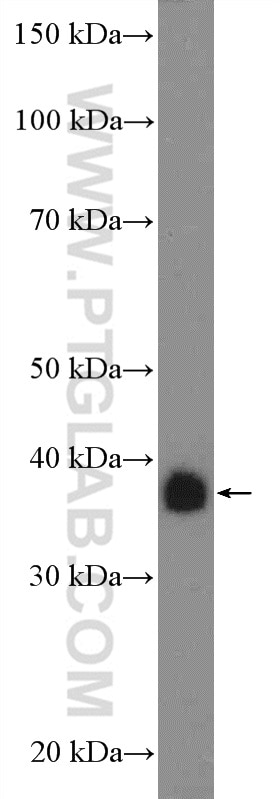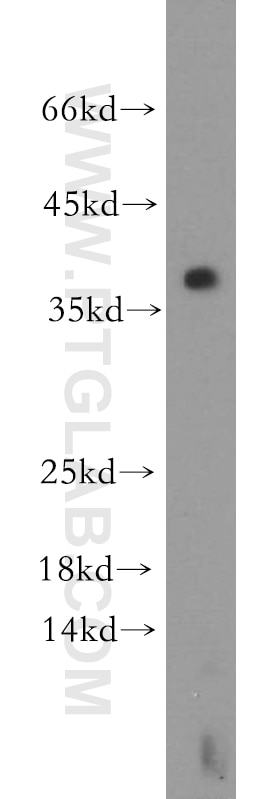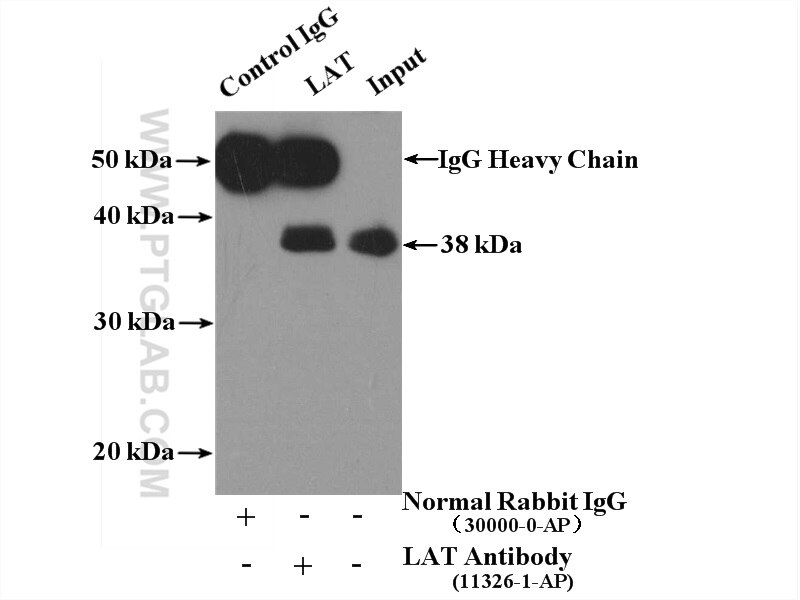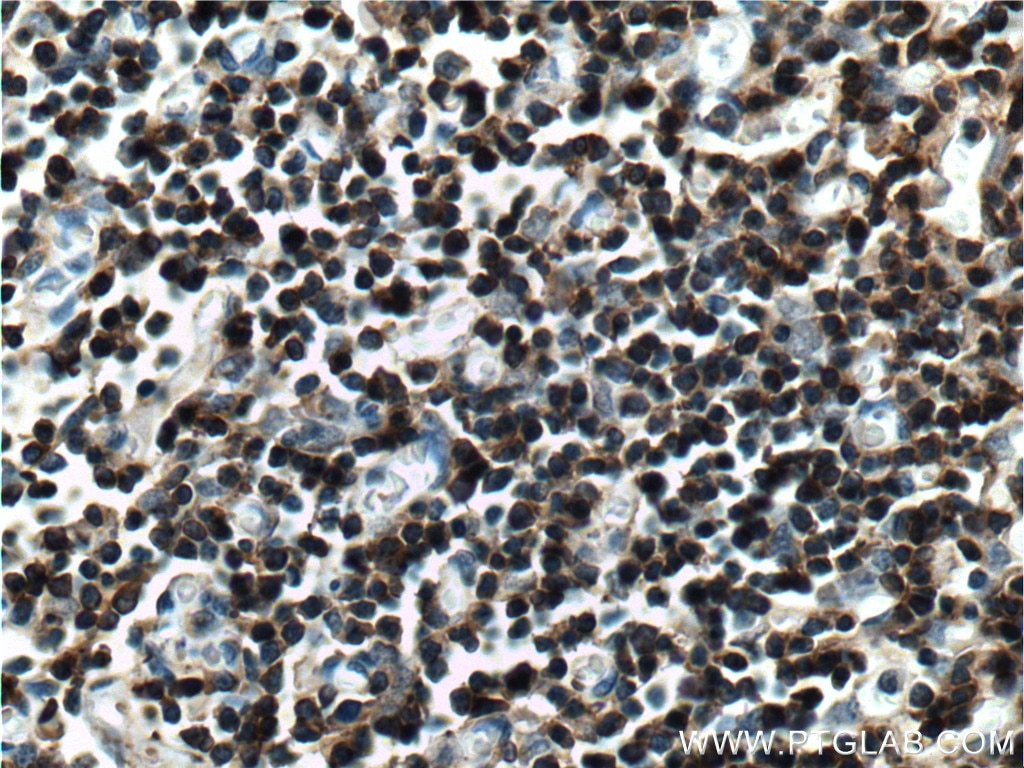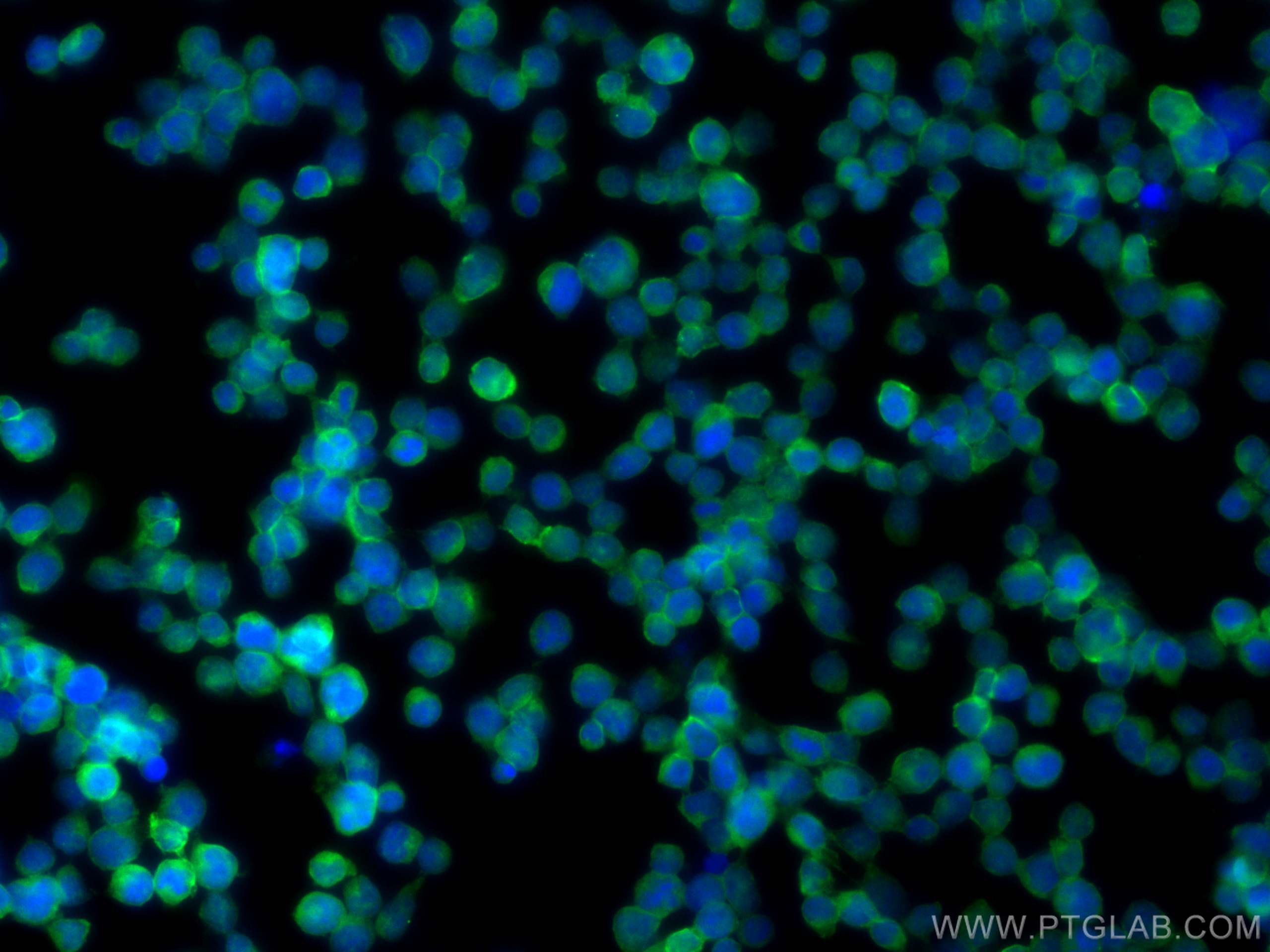LAT Polyklonaler Antikörper
LAT Polyklonal Antikörper für WB, IHC, IF/ICC, IP, ELISA
Wirt / Isotyp
Kaninchen / IgG
Getestete Reaktivität
human, Maus
Anwendung
WB, IHC, IF/ICC, IP, ELISA
Konjugation
Unkonjugiert
Kat-Nr. : 11326-1-AP
Synonyme
Galerie der Validierungsdaten
Geprüfte Anwendungen
| Erfolgreiche Detektion in WB | Jurkat-Zellen, mouse thymus |
| Erfolgreiche IP | Jurkat-Zellen |
| Erfolgreiche Detektion in IHC | humanes Thymusgewebe Hinweis: Antigendemaskierung mit TE-Puffer pH 9,0 empfohlen. (*) Wahlweise kann die Antigendemaskierung auch mit Citratpuffer pH 6,0 erfolgen. |
| Erfolgreiche Detektion in IF/ICC | Jurkat-Zellen |
Empfohlene Verdünnung
| Anwendung | Verdünnung |
|---|---|
| Western Blot (WB) | WB : 1:500-1:2000 |
| Immunpräzipitation (IP) | IP : 0.5-4.0 ug for 1.0-3.0 mg of total protein lysate |
| Immunhistochemie (IHC) | IHC : 1:50-1:500 |
| Immunfluoreszenz (IF)/ICC | IF/ICC : 1:200-1:800 |
| It is recommended that this reagent should be titrated in each testing system to obtain optimal results. | |
| Sample-dependent, check data in validation data gallery | |
Veröffentlichte Anwendungen
| WB | See 4 publications below |
| IHC | See 2 publications below |
Produktinformation
11326-1-AP bindet in WB, IHC, IF/ICC, IP, ELISA LAT und zeigt Reaktivität mit human, Maus
| Getestete Reaktivität | human, Maus |
| In Publikationen genannte Reaktivität | human, Maus |
| Wirt / Isotyp | Kaninchen / IgG |
| Klonalität | Polyklonal |
| Typ | Antikörper |
| Immunogen | LAT fusion protein Ag1868 |
| Vollständiger Name | linker for activation of T cells |
| Berechnetes Molekulargewicht | 262 aa, 28 kDa |
| Beobachtetes Molekulargewicht | 36-38 kDa |
| GenBank-Zugangsnummer | BC011563 |
| Gene symbol | LAT |
| Gene ID (NCBI) | 27040 |
| Konjugation | Unkonjugiert |
| Form | Liquid |
| Reinigungsmethode | Antigen-Affinitätsreinigung |
| Lagerungspuffer | PBS mit 0.02% Natriumazid und 50% Glycerin pH 7.3. |
| Lagerungsbedingungen | Bei -20°C lagern. Nach dem Versand ein Jahr lang stabil Aliquotieren ist bei -20oC Lagerung nicht notwendig. 20ul Größen enthalten 0,1% BSA. |
Hintergrundinformationen
LAT is a membrane-localized adaptor protein which is primarily concentrated in microdomains by palmitoylation. LAT plays a central role in T-cell activation by nucleating signaling complexes that are critical for the propagation of T-cell signals from the plasma membrane to the cellular interior. In addition to being a positive regulator of T cell signaling, LAT also recruits several negative regulatory proteins, including kinases, phosphatases, and ubiquitin ligases, which ultimately leads to signal termination. LAT is subject to ubiquitylation, and ubiquitin-resistant mutants of LAT display enhanced signaling.
Protokolle
| Produktspezifische Protokolle | |
|---|---|
| WB protocol for LAT antibody 11326-1-AP | Protokoll herunterladen |
| IHC protocol for LAT antibody 11326-1-AP | Protokoll herunterladen |
| IF protocol for LAT antibody 11326-1-AP | Protokoll herunterladen |
| IP protocol for LAT antibody 11326-1-AP | Protokoll herunterladen |
| Standard-Protokolle | |
|---|---|
| Klicken Sie hier, um unsere Standardprotokolle anzuzeigen |
Publikationen
| Species | Application | Title |
|---|---|---|
Sci Rep A ceRNA-associated risk model predicts the poor prognosis for head and neck squamous cell carcinoma patients. | ||
Hepatol Int Upregulation of CD147 protects hepatocellular carcinoma cell from apoptosis through glycolytic switch via HIF-1 and MCT-4 under hypoxia. | ||
Eur J Haematol Interferon gamma regulates a complex pro-survival signal network in chronic lymphocytic leukemia | ||
Nat Commun Cell volume controlled by LRRC8A-formed volume-regulated anion channels fine-tunes T cell activation and function |
